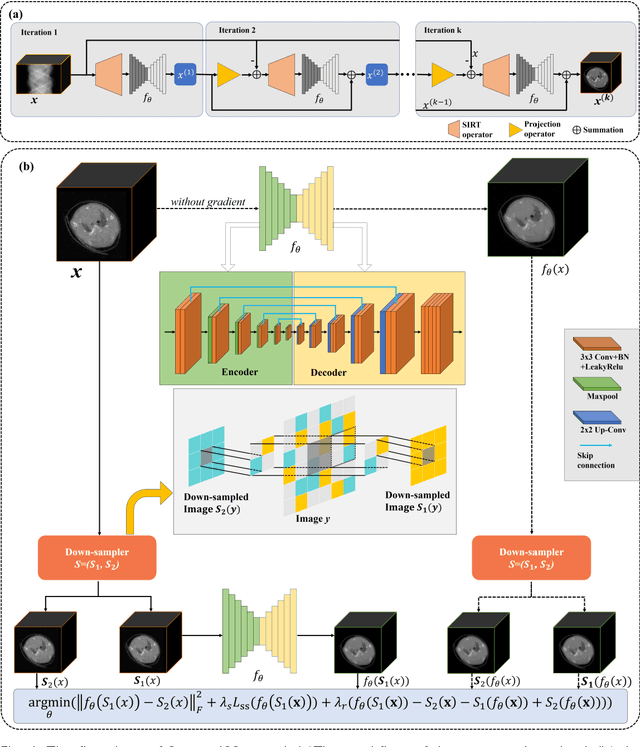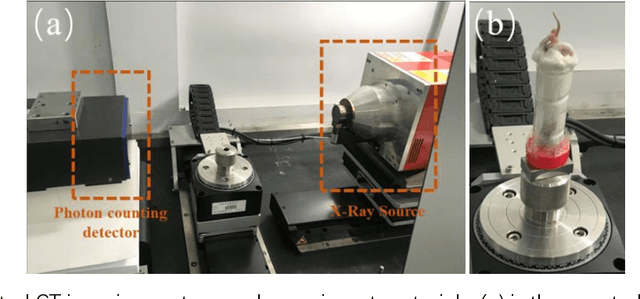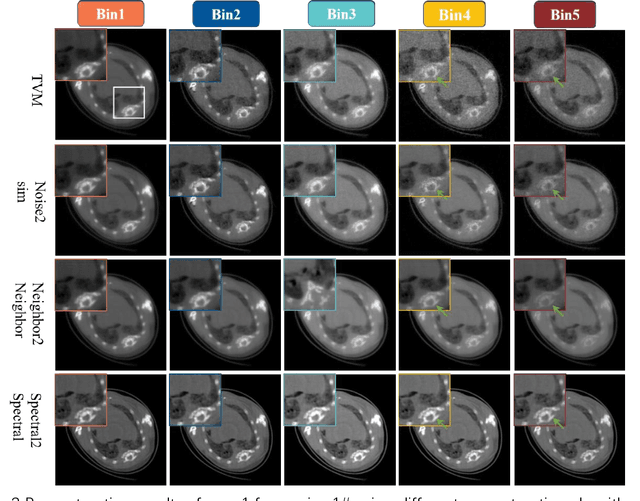Peng Feng
Spectral2Spectral: Image-spectral Similarity Assisted Spectral CT Deep Reconstruction without Reference
Oct 03, 2022



Abstract:The photon-counting detector (PCD) based spectral computed tomography attracts much more attentions since it has the capability to provide more accurate identification and quantitative analysis for biomedical materials. The limited number of photons within narrow energy-bin leads to low signal-noise ratio data. The existing supervised deep reconstruction networks for CT reconstruction are difficult to address these challenges. In this paper, we propose an iterative deep reconstruction network to synergize model and data priors into a unified framework, named as Spectral2Spectral. Our Spectral2Spectral employs an unsupervised deep training strategy to obtain high-quality images from noisy data with an end-to-end fashion. The structural similarity prior within image-spectral domain is refined as a regularization term to further constrain the network training. The weights of neural network are automatically updated to capture image features and structures with iterative process. Three large-scale preclinical datasets experiments demonstrate that the Spectral2spectral reconstruct better image quality than other state-of-the-art methods.
TBC-Net: A real-time detector for infrared small target detection using semantic constraint
Dec 27, 2019



Abstract:Infrared small target detection is a key technique in infrared search and tracking (IRST) systems. Although deep learning has been widely used in the vision tasks of visible light images recently, it is rarely used in infrared small target detection due to the difficulty in learning small target features. In this paper, we propose a novel lightweight convolutional neural network TBC-Net for infrared small target detection. The TBCNet consists of a target extraction module (TEM) and a semantic constraint module (SCM), which are used to extract small targets from infrared images and to classify the extracted target images during the training, respectively. Meanwhile, we propose a joint loss function and a training method. The SCM imposes a semantic constraint on TEM by combining the high-level classification task and solve the problem of the difficulty to learn features caused by class imbalance problem. During the training, the targets are extracted from the input image and then be classified by SCM. During the inference, only the TEM is used to detect the small targets. We also propose a data synthesis method to generate training data. The experimental results show that compared with the traditional methods, TBC-Net can better reduce the false alarm caused by complicated background, the proposed network structure and joint loss have a significant improvement on small target feature learning. Besides, TBC-Net can achieve real-time detection on the NVIDIA Jetson AGX Xavier development board, which is suitable for applications such as field research with drones equipped with infrared sensors.
 Add to Chrome
Add to Chrome Add to Firefox
Add to Firefox Add to Edge
Add to Edge